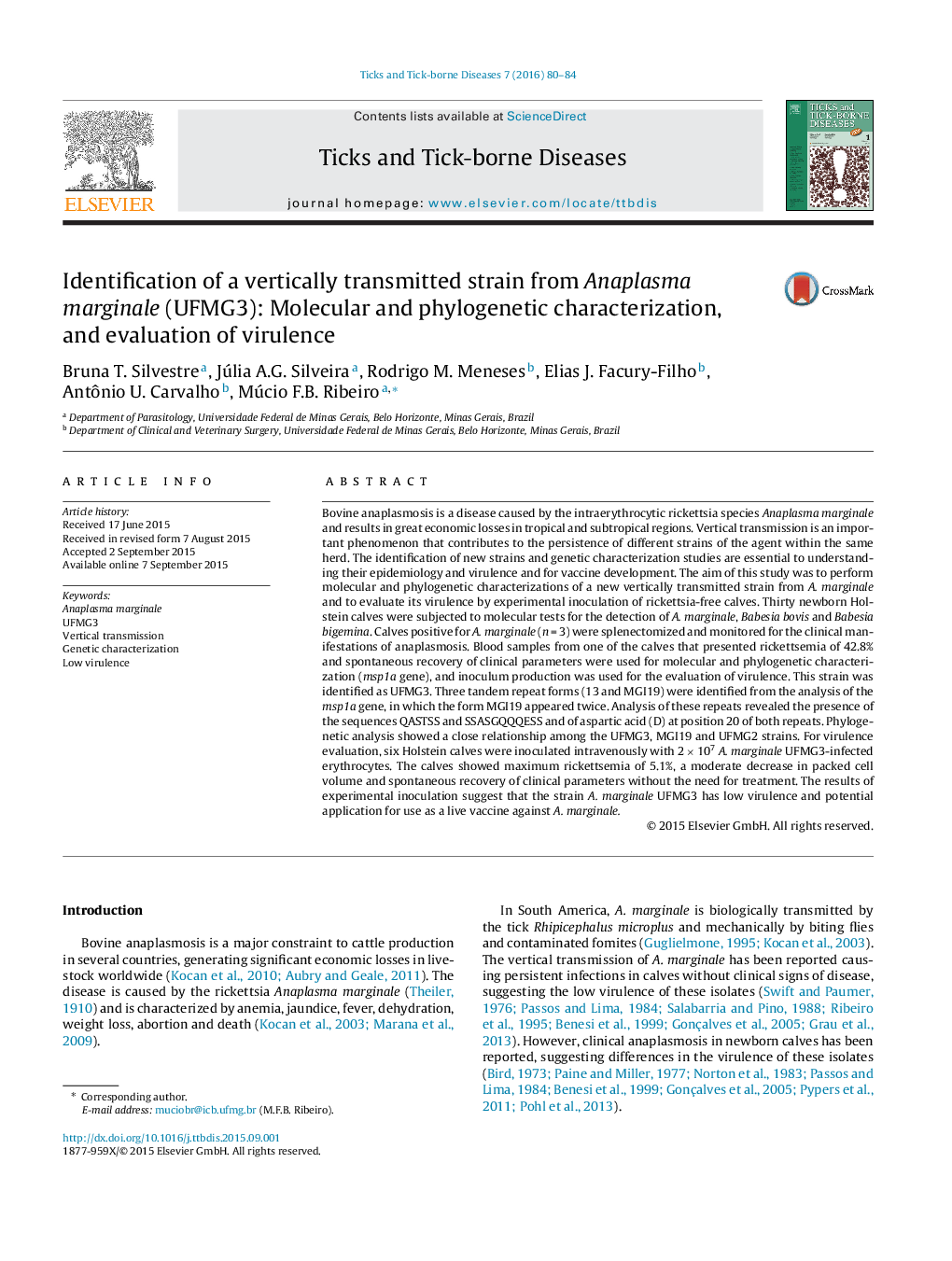| Article ID | Journal | Published Year | Pages | File Type |
|---|---|---|---|---|
| 5807013 | Ticks and Tick-borne Diseases | 2016 | 5 Pages |
Bovine anaplasmosis is a disease caused by the intraerythrocytic rickettsia species Anaplasma marginale and results in great economic losses in tropical and subtropical regions. Vertical transmission is an important phenomenon that contributes to the persistence of different strains of the agent within the same herd. The identification of new strains and genetic characterization studies are essential to understanding their epidemiology and virulence and for vaccine development. The aim of this study was to perform molecular and phylogenetic characterizations of a new vertically transmitted strain from A. marginale and to evaluate its virulence by experimental inoculation of rickettsia-free calves. Thirty newborn Holstein calves were subjected to molecular tests for the detection of A. marginale, Babesia bovis and Babesia bigemina. Calves positive for A. marginale (n = 3) were splenectomized and monitored for the clinical manifestations of anaplasmosis. Blood samples from one of the calves that presented rickettsemia of 42.8% and spontaneous recovery of clinical parameters were used for molecular and phylogenetic characterization (msp1a gene), and inoculum production was used for the evaluation of virulence. This strain was identified as UFMG3. Three tandem repeat forms (13 and MGI19) were identified from the analysis of the msp1a gene, in which the form MGI19 appeared twice. Analysis of these repeats revealed the presence of the sequences QASTSS and SSASGQQQESS and of aspartic acid (D) at position 20 of both repeats. Phylogenetic analysis showed a close relationship among the UFMG3, MGI19 and UFMG2 strains. For virulence evaluation, six Holstein calves were inoculated intravenously with 2 Ã 107A. marginale UFMG3-infected erythrocytes. The calves showed maximum rickettsemia of 5.1%, a moderate decrease in packed cell volume and spontaneous recovery of clinical parameters without the need for treatment. The results of experimental inoculation suggest that the strain A. marginale UFMG3 has low virulence and potential application for use as a live vaccine against A. marginale.
